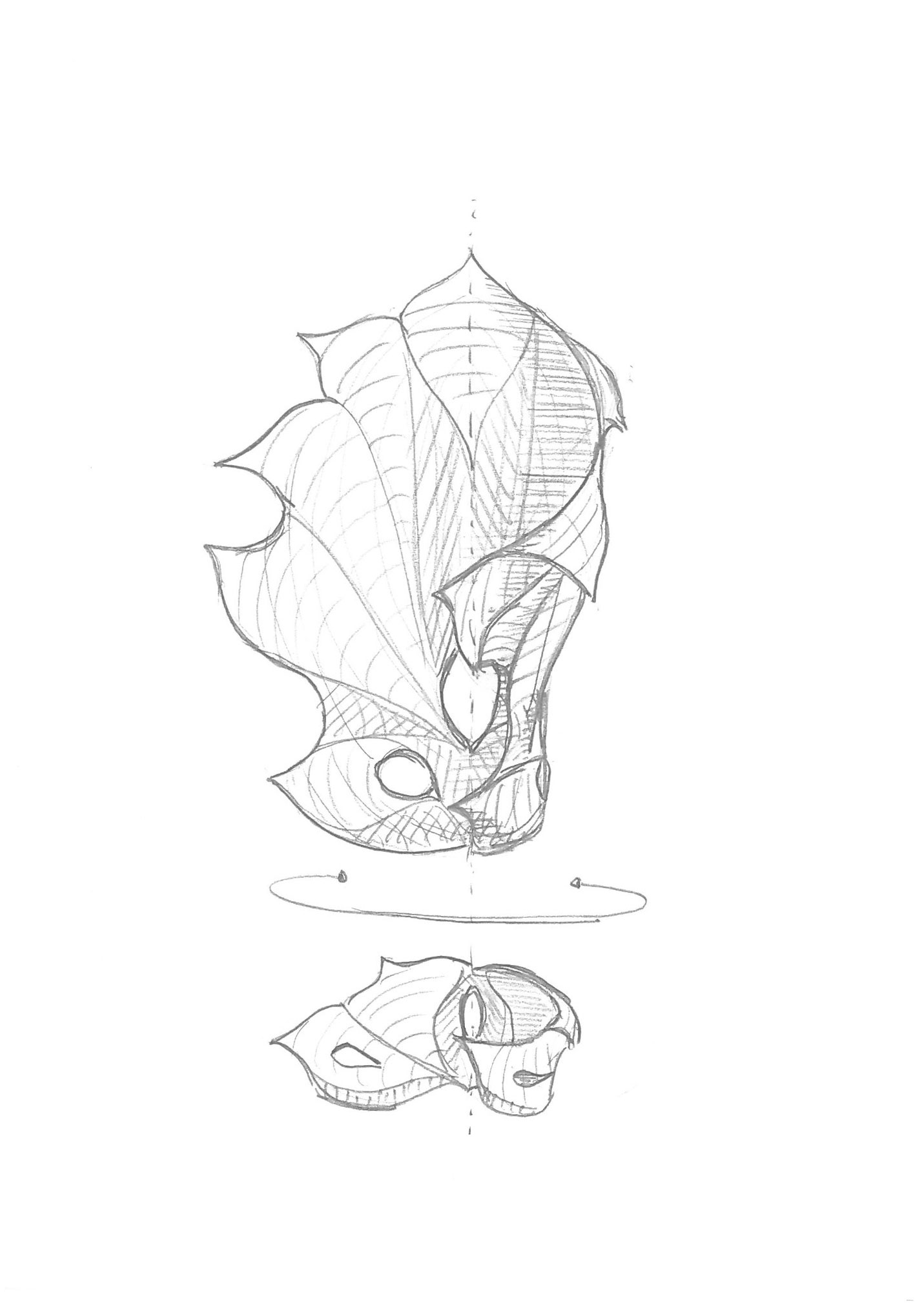















The skin primitives we have created begin as extracts from natural waste streams such as those for produce and shrimp shells. These are added to water and extruded using our water-based digital fabrication platform. Composites are made and chemically manipulated to engender specific mechanical and optical properties. In life, these properties change over time in response to changing environmental conditions. This gives an indication of their rigidity, brittleness, and time to decay. Since their existence is transient, meaning that they quickly and easily dissociate in water, they are able to be created, broken down, and transformed through natural resource cycles.
These tunable chemical and physical properties enable parametric design of micro-scale surface features and water uptake, which are two of the most important factors in supporting organisms who can build new materials, augment existing ones, or interact symbiotically with the surrounding environment. Thus, in life these skins engage in designed symbioses with other organisms to improve their fitness within an ecosystem. Here, surface roughness, hydrophilicity, tilt angle, and hysteresis are modulated using different nanofillers as well as adjustments to pH and fabrication processes. Doing so enables water to be differentially immobilized and absorbed from the atmosphere. Various nutrients and sugars can be incorporated into swellable skins, so that they can be slowly leached out to support biologic growth.
These tunable chemical and physical properties enable parametric design of micro-scale surface features and water uptake, which are two of the most important factors in supporting organisms who can build new materials, augment existing ones, or interact symbiotically with the surrounding environment. Thus, in life these skins engage in designed symbioses with other organisms to improve their fitness within an ecosystem. Here, surface roughness, hydrophilicity, tilt angle, and hysteresis are modulated using different nanofillers as well as adjustments to pH and fabrication processes. Doing so enables water to be differentially immobilized and absorbed from the atmosphere. Various nutrients and sugars can be incorporated into swellable skins, so that they can be slowly leached out to support biologic growth.